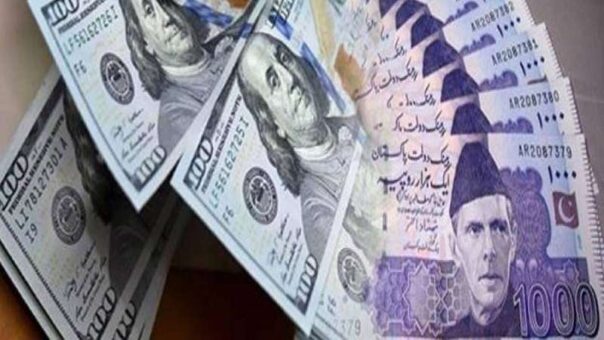Karachi, November 2, 2023 – The Pakistani Rupee (PKR) continued its downward trajectory for the ninth consecutive session, depreciating further against the US dollar to reach a rate of PKR 283.43 in the interbank foreign exchange market.
This represents a decline of 78 paisas compared to the previous day’s closing rate of PKR 282.65.
Over the course of these nine sessions, the rupee has fallen by approximately PKR 4.46, marking a significant 1.66 percent depreciation since its closing rate of PKR 278.79 on October 20, 2023. The sustained depreciation of the rupee has raised concerns among financial experts and analysts who have identified several key factors contributing to this decline.
One of the primary factors contributing to the rupee’s depreciation is the diminishing foreign exchange reserves of Pakistan. By the week ending October 20, 2023, the country’s foreign exchange reserves had decreased by $257 million, dropping to $12.656 billion, down from the previous week’s figure of $12.913 billion. This reduction in foreign exchange reserves has a direct impact on the nation’s ability to maintain a stable currency value.
Furthermore, the official foreign exchange reserves of the State Bank of Pakistan (SBP) also experienced a substantial decrease, falling by $220 million to $7.494 billion by the week ending October 20, 2023, compared to $7.714 billion the previous week. A decline in the central bank’s reserves can limit its ability to intervene in the foreign exchange market and provide support to the PKR.
Rising demand for imports is another significant factor contributing to the rupee’s depreciation. The recent economic recovery and increased import activities have exerted considerable pressure on the rupee. As businesses expand and the economy rebounds, the need for foreign currency to fund imports has surged, resulting in heightened demand for the US dollar.
The continuous depreciation of the Pakistani Rupee against the US Dollar necessitates close monitoring by authorities and the development of strategies to stabilize the currency. A weaker currency can impact the cost of imports, inflation rates, and the overall economic health of the nation. For businesses engaged in international trade, fluctuations in exchange rates can significantly affect their profitability and competitiveness in the global market.
A pressing issue that needs to be addressed is the country’s balance of payments. A persistent trade deficit could further strain foreign exchange reserves and the overall financial stability of Pakistan. In response to these challenges, both the government and the central bank may need to consider implementing monetary and fiscal policies to address the situation.
It remains imperative that stakeholders, including the government, central bank, and market participants, closely collaborate to manage the situation and implement measures that safeguard the value of the rupee and promote financial stability. The ongoing depreciation of the PKR underscores the importance of a well-thought-out and proactive approach to managing Pakistan’s foreign exchange market.
In conclusion, the sustained depreciation of the Pakistani Rupee against the US Dollar highlights the importance of addressing the root causes of this decline, including the country’s foreign exchange reserves, trade balance, and increased demand for imports. To ensure economic stability, a coordinated effort is required to implement effective policies and strategies that support the currency and maintain the overall financial health of Pakistan.
